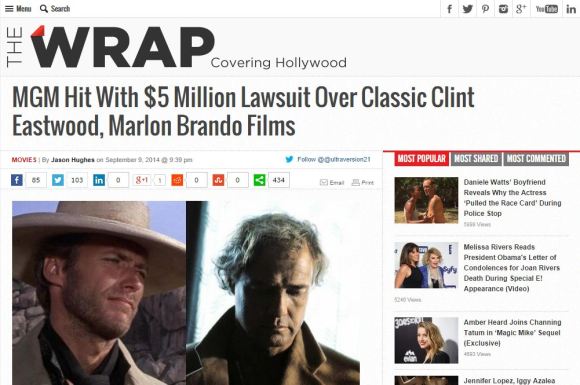
So, if you follow the blog and podcast, you have probably figured out that I like to try to figure how the Spaghetti western genre works, how films are related to each other, and why audience liked (and still like) them. I think some of my ideas are interesting, but I always like to find other people’s ideas. So I decided to read Judith Hess’s influential 1974 article Genre film and the status quo.
Hess proposes that we look at the cultural and political function of film genres like the western:
I think that we may see what genre films are by examining what they do. These films came into being and were financially successful because they temporarily relieved the fears aroused by a recognition of social and political conflicts. They helped to discourage any action which might otherwise follow upon the pressure generated by living with these conflicts. Genre films produce satisfaction rather than action, pity and fear rather than revolt. They serve the interests of the ruling class by assisting in the maintenance of the status quo and they throw a sop to oppressed groups who, because they are unorganized and therefore afraid to act, eagerly accept the genre film’s absurd solutions to economic and social conflicts. When we return to the complexities of the society in which we live, the same conflicts assert themselves. So we return to genre films for easy comfort and solace—hence their popularity.
Hess argues that genre films simplify the conflicts that people face, reframing these conflicts in a distant setting (the Old West) and providing a simple resolution to deep contradictions in the society. Genre movies, like the western, ultimately make audiences politically quiescent.
About westerns specifically, she writes:
The western centers on the violent act and ascertains when, if ever, it becomes morally right.
I agree with this point. In fact, in a post from yesterday I said essentially the same thing when I was talking about what makes a Spaghetti Western protagonist an ‘anti-hero.’ Usually, they do exactly what John Wayne or Gary Cooper would have done (That would be a great bumper sticker: “What would John Wayne do?”), but in films like Fistful of Dollars they don’t bother explaining away their actions by pointing to grand narratives of law or justice. Even in Once Upon A Time In The West, Harmonica’s revenge is not justified in terms of the coming of ‘civilization.’ Leone goes out of his way to say that Harmonica, Frank, and Banjo all exist before the justifications that society must necessarily bring with it.
Frank: Morton once told me I could never be like him. Now I understand why. Wouldn’t have bothered him, knowing you were around somewhere alive.
Harmonica: So, you found out you’re not a businessman after all.
Frank: Just a man.
Harmonica: An ancient race. Other Mortons will be along, and they’ll kill it off.
Frank: The future don’t matter to us. Nothing matters now – not the land, not the money, not the woman. I came here to see you. ‘Cause I know that now, you’ll tell me what you’re after.
Harmonica: …Only at the point of dyin’.
Frank: I know.
This is the main difference of between the Italian western and the Hollywood western. These movies strip away the origin myths of the American frontier and reveal the underlying mythic structure. It is after this happens that you begin to see more and more movies in which the hero or villain even becomes supernatural (Django Kill, High Plains Drifter, Dead in Tombstone, etc . . .). The genre changed profoundly in 1964.
Hess continues along this vein:
The problems posed by these contradictions are solved simply. The western decrees that the violent act can become morally right when it occurs within the confines of a code which allows for executions, revenge killings, and killings in defense of one’s life and property. In the microcosmic western society everyone’s code is the same; thus absolute guilt and innocence are possible because social and moral goodness are the same. . .
In order to flesh out these assertions it is necessary to examine each of the genres in some detail. The western male is dominated by a code of honor which prescribes his every action; violence by lynching or shooting, amorous advances, or friendships are determined by some fixed rule. One lynches cattle rustlers but not petty thieves—one runs them out of town. One sleeps only with bar girls, not eastern school teachers. One never shoots a man in the back; one is utterly loyal to one’s friends, defending them physically and verbally at every possible opportunity. At a certain mystical point in the interaction between two opposing forces, the western version of the duel becomes morally acceptable. Both the villain and the know immediately when this point comes as they do not exist as psychological entities apart from the code—rather, they embody the code. The earliest westerns afford the clearest expression of the workings of this code. In these movies the heroes and villains are like chess pieces moved about to depict the code’s intricacies. In a great many westerns you will note the eerie occurrence of two phrases which are as far as these movies go toward positing motivation: “I have to…” and “All I know is… “ These phrases express how the code provides motivation, not the person himself. Westerners act together in absolute, unthinking accord. Westerns examine those aspects of the code which determine the westerner’s response to situations which demand violence. The compartmentalizations of the code—one treats bank robbers one way and friends another—allow for situations which involve contradictory responses. What happens, for example, in THE VIRGINIAN (Victor Fleming, 1929), a movie that Robert Warshow calls “archetypal, “ when a captured rustler is at the same time a friend? Gary Cooper, a chess-piece representation of the code, is caught on the horns of a moral and social dilemma. Although he must bow to the will of the other members of the posse, for whom the situation is not complicated (the rustler is not their friend) and assist in the lynching, and his friend exonerates him, Cooper must work within the code to redeem himself—to rid himself of guilt by balancing the books.
And, there is a single, simple solution. His friend has been drawn into rustling by the film’s real villain, Trampas. Cooper must wipe him out, at the same time showing the restraint demanded of the westerner. He must wait for that mystical point in time at which the showdown becomes morally and socially right. And, Trampas, because he is a villain and thus cannot act any other way, provides Cooper with sufficient injury and insult, and is thus shot in fair fight. Several violent actions are condoned in the movie: traditionally sanctioned violence demanded by the group (note that Cooper never questions the lynching, he only suffers because he is forced to abandon his friend); violence which is brought about by repeated attacks on one’s character (Trampas indicates that Cooper is a coward) and which redeems the violence Cooper has been forced to do to his friend. These acts of violence have complete social sanction. Only Cooper’s eastern schoolmarm girlfriend fails to condone Cooper’s actions; she has not as yet been assimilated into western society.
In the western every man who operates solely with reference to this strict code lives and dies redeemed. He has retained his social and moral honor. The code provides justification; thus it allows for a guiltless existence. On the other hand, we do not know ourselves when, if ever, violence is justifiable. We have great difficulty in forming a personal code and we cannot be sure that this code will conform in any way to the large, impersonal legal code set up to regulate our unwieldy, decaying economic structure. The westerner’s code is at once personal and social—if a man lives by it he both conforms to social norms and retains his personal integrity. It is evident whence comes the satisfaction we get from the western. Momentarily we understand the peace which comes from acting in accord with a coherent moral and social code and forget our fragmented selves. Many critics have seen the western as a glorification of traditional American individualism. On the contrary, the western preaches integration and assimilation and absolute obedience to the laws of the land.
Then she closes out with this:
We may trace the amazing survival and proliferation of the genre films to their function. They assist in the maintenance of the existing political structure. The solutions these films give to the conflicts inherent in capitalism require obeisance to the ruling class, and cause the viewer to yearn for less, not greater freedom in the face of the insoluble ambiguities which surround him or her. He or she is encouraged to cease examining him/her. He/she is encouraged to cease examining his/her surroundings, and to take refuge in fantasy from his/her only real alternative—to rise up against the injustices perpetrated by the present system upon its members.
This article has been hugely influential. It distilled the attitudes of the Marxist influenced academics and critics of the late 1960s, establishing a foundation for the way that genres are studied in the university in disciplines like Cultural Studies. But I must admit that I find this type of criticism nauseating.
There are a number of issues that I have with this perspective, but the one I will briefly discuss here is this: Hess disagreement is with the values of a previous generation, not with genre films. Given that the factory system in pre-1960s Hollywood was so centralized, it makes sense that the movies they produced would have a very limited perspective on the world. Indeed, many of them did resolve conflicts in an unrealistic way. But that is not a characteristic of the genre film, but instead of many genre films made in Hollywood at a particular time.
If you look a little deeper, you find that this argument about the function of genre films begins to fall apart. First, many of the psychological westerns of the 1950s presented a much more ambiguous, complex view of the world. . . and they were following film noir in this anxious uncertainty. Second, outside of Hollywood there was a vibrant B-movie industry independent of Hollywood’s centralizing tendencies. Many of these movies were very transgressive.
Finally, if we look at the Italian film industry, we have an almost anarchic industry churning out films to meet the public’s taste . . . very irreverent tastes. Audiences are not passive. They choose what they want to see. In the 1940s and 1950s, the many international audiences (and great filmmakers like Kurosawa) gravitated to the worldview of John Ford and Howard Hawks (as well as Roy Rogers and Wild Bill Elliot). In the 1960s, they still loved westerns but instead loved the playful irreverence of the Spaghetti western. And still later, the troubled nostalgia of the revisionist western was preferred.
Hess is too simplistic. She had a problem with the beliefs of her parent’s generation and blamed it on western movies.












